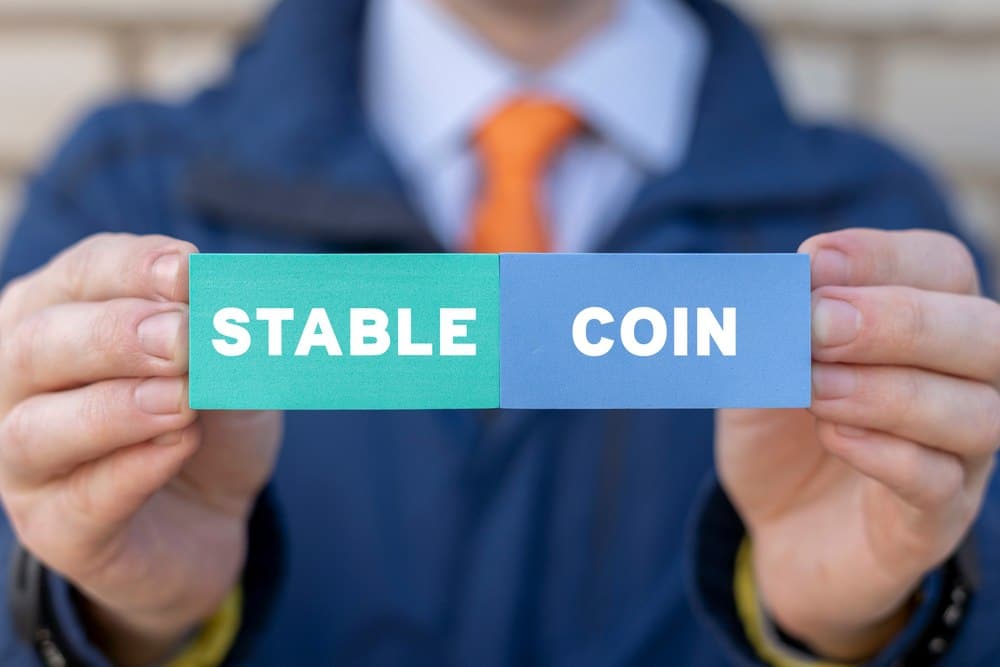Tether has launched a new gold-backed stablecoin named Alloy (aUSD₮), which leverages Tether Gold (XAU₮) for stability. This article delves into the concept of Alloy, its underlying mechanisms, and its advantages within the digital asset landscape.
What is a Tethered Asset?
Tethered assets, commonly known as stablecoins, are digital tokens pegged to the value of various reference assets such as fiat currencies, commodities, or financial instruments.
These assets can be backed by single or multiple types of collateral, offering flexibility and enhanced risk management. The primary goal is to maintain a stable value through overcollateralization and robust liquidity pools, ensuring the asset closely tracks its reference value.
A well-known example of a tethered asset is Tether (USDT), which aims to maintain a 1:1 peg with the U.S. dollar. Despite facing regulatory scrutiny and occasional depegging events, Tether conducts regular independent attestations to verify its reserves, bolstering transparency and compliance.
Alloy (aUSD₮) by Tether
Alloy (aUSD₮) is Tether’s gold-backed stablecoin, minted using Ethereum Virtual Machine (EVM)-compatible smart contracts and collateralized by Tether Gold (XAU₮), a digital representation of physical gold.
Key Features of Alloy (aUSD₮)
- Collateral: Each Alloy token is backed by Tether Gold (XAU₮), with each XAU₮ representing one troy ounce (31.1 grams) of gold stored in a Swiss vault, ensuring stability and acting as a hedge against market volatility.
- Smart Contracts: The minting and management of aUSD₮ are facilitated through Ethereum-compatible smart contracts, ensuring seamless interoperability within the Ethereum ecosystem.
- Overcollateralization: Alloy employs an overcollateralization model, where the value of the collateral (XAU₮) exceeds the face value of the aUSD₮ tokens, providing a buffer against market fluctuations.
How Alloy (aUSD₮) Works
Vault System
Alloy utilizes a vault mechanism for minting and managing aUSD₮:
- Minting: Users lock a specified amount of Tether Gold into a smart contract to mint a corresponding amount of aUSD₮. The amount of aUSD₮ that can be minted is determined by the collateral-to-asset ratio, known as the liquidation point.
- Collateral Management: The vault stores users’ collateral, unissued aUSD₮, and details of collateralized minted positions (CMP). Only verified Ethereum addresses that have completed KYC checks can interact with the vaults.
Liquidation Mechanism
To ensure the system remains overcollateralized:
- Trigger: Liquidation occurs when the value of the collateral falls below a threshold, set at 75% of the collateral’s value.
- Process: Authorized liquidators can reclaim the user’s XAU₮ and return a corresponding amount of aUSD₮ to maintain system integrity.
Interaction and Fees
Users interact with Alloy’s smart contracts via a user-friendly web interface at alloy.tether.to. The system charges fees for minting, returning, and liquidating aUSD₮:
- Mint Fee: 25 basis points (bps) for each newly minted aUSD₮.
- Return Fee: 25 bps when redeeming aUSD₮ for its underlying collateral.
- Liquidation Fee: 75 bps for liquidators during the liquidation of XAU₮.
Advantages of aUSD₮
Alloy (aUSD₮) offers several benefits:
- Stability: Backed by gold, aUSD₮ combines the stability of the U.S. dollar with the value-preserving characteristics of gold.
- Transparency: Based on the Ethereum blockchain, aUSD₮ uses auditable smart contracts for secure and transparent minting and redemption processes.
- Yield Generation: The overcollateralization model allows for potential yield generation, making aUSD₮ attractive for investors seeking stability and returns.
Comparison with Other Tether Products
- Tether (USDT): Pegged to the U.S. dollar, designed for everyday transactions.
- Tether Gold (XAU₮): Represents one troy ounce of physical gold, suitable for investors seeking gold exposure.
- Alloy (aUSD₮): Combines the stability of the dollar with the security of gold, offering yield generation through overcollateralization.
Retrieving Deposited XAU₮
To retrieve XAU₮ deposited as collateral, users must maintain the collateral-to-asset ratio below 75%. Here’s the process:
- Withdrawal Request: Users request a withdrawal from the Alloy smart contract.
- MTV Ratio: The request is approved only if it doesn’t push the MTV ratio above 75%. Users may need to return some aUSD₮ to lower the MTV ratio before withdrawing.
- Repurchasing aUSD₮: Users might need to buy back aUSD₮ from the secondary market to cover the return fees and successfully complete the withdrawal process.
Conclusion
Alloy (aUSD₮) by Tether marks a significant innovation in the realm of stablecoins, merging the stability of the U.S. dollar with the intrinsic value of gold. With robust security measures, transparent operations, and potential for yield generation, aUSD₮ offers a resilient and attractive option for investors seeking stability and diversification in their digital asset portfolios.
As regulations and technologies continue to evolve, Alloy stands as a pioneering model at the intersection of traditional assets and blockchain technology.

